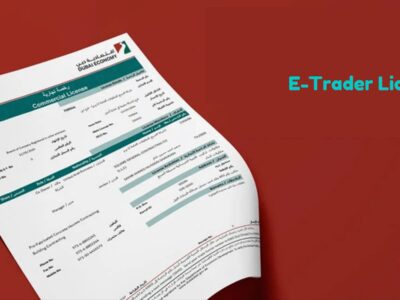Energy costs are a significant expense for businesses, especially in regions like the midlands, where the climate can demand high energy usage year-round. With rising energy prices and increasing pressure to adopt sustainable practices, it’s more important than ever for businesses to find ways to reduce energy consumption. Efficient facilities management is one of the most effective ways to achieve this. By optimizing energy use in buildings and facilities, businesses can significantly cut costs, reduce their carbon footprint, and improve their bottom line. This blog post explores some lesser-known strategies for midlands businesses to reduce energy costs through efficient facilities management.
1. Implement advanced energy monitoring systems
Why it matters:
Many businesses still rely on outdated energy monitoring systems that provide limited data and insights. Upgrading to advanced energy monitoring systems allows businesses to track energy usage in real-time, identify inefficiencies, and take immediate action to reduce waste.
Tips:
Use smart meters: smart meters provide detailed, real-time information on energy consumption, allowing businesses to see exactly where energy is being used and where it can be saved. According to the department for business, energy & industrial strategy, businesses that use smart meters can reduce energy usage by up to 15% .
Integrate iot sensors: internet of things (iot) sensors can be integrated into various systems within a facility, such as hvac, lighting, and machinery, to provide continuous data on energy consumption. This allows facilities managers to optimize operations and reduce unnecessary energy use.
Energy management software: advanced energy management software can analyze data from smart meters and iot sensors, providing actionable insights and automating energy-saving measures. These systems can help businesses in the midlands achieve up to 30% energy savings .
2. Optimize hvac systems with predictive maintenance
Why it matters:
Heating, ventilation, and air conditioning (hvac) systems are among the largest energy consumers in commercial buildings. Inefficient hvac systems can lead to significant energy waste and higher costs. Predictive maintenance, powered by ai and machine learning, can help businesses maintain optimal performance while reducing energy consumption.
Tips:
Implement predictive maintenance tools: predictive maintenance tools use ai to monitor hvac systems in real-time, predicting when maintenance is needed before issues arise. This approach can reduce hvac energy consumption by 20% .
Regularly clean and replace filters: clogged or dirty filters force hvac systems to work harder, consuming more energy. Regular maintenance and filter replacement can improve efficiency and reduce costs.
Optimize temperature settings: small adjustments to temperature settings can lead to significant energy savings. For example, raising the temperature by just 1°c in the summer can reduce cooling costs by up to 8% .
3. Leverage renewable energy and onsite generation
Why it matters:
Relying solely on the grid for energy is becoming increasingly expensive, especially as energy prices rise. By investing in renewable energy sources and onsite generation, businesses can reduce their dependency on the grid, lower energy costs, and enhance their sustainability credentials.
Tips:
Install solar panels: solar panels are becoming more affordable and can provide a significant portion of a business’s energy needs. In the midlands, businesses that install solar panels can see a return on investment in as little as 5-7 years, with potential energy savings of up to 70% .
Explore wind energy: for businesses with ample outdoor space, small wind turbines can be a viable option for generating renewable energy onsite. This can be particularly effective in the midlands, where wind speeds are conducive to small-scale wind energy generation.
Use combined heat and power (chp) systems: chp systems generate electricity and capture the heat that would otherwise be wasted. This can reduce energy costs by up to 40% compared to using grid electricity and separate heating systems .
4. Upgrade lighting systems to led and smart controls
Why it matters:
Lighting is often a significant, yet overlooked, source of energy consumption in commercial facilities. Upgrading to led lighting and implementing smart controls can drastically reduce energy usage and costs.
Tips:
Switch to led lighting: led bulbs use up to 75% less energy than traditional incandescent bulbs and last 25 times longer . This can lead to substantial energy savings, especially in facilities that require lighting for extended periods.
Install smart lighting controls: smart lighting systems, including motion sensors and daylight harvesting controls, automatically adjust lighting levels based on occupancy and natural light availability. This can reduce lighting energy consumption by 20-50% .
Implement a lighting audit: conducting a lighting audit can help identify areas where lighting can be reduced or optimized, leading to further energy savings.
5. Enhance building insulation and energy efficiency
Why it matters:
Poor insulation and building inefficiencies can lead to significant heat loss in the winter and heat gain in the summer, driving up energy costs. Improving insulation and addressing energy inefficiencies can result in substantial savings.
Tips:
Upgrade insulation: insulating walls, roofs, and floors can reduce heating and cooling costs by up to 25% . For businesses in older buildings, upgrading insulation should be a top priority.
Install energy-efficient windows: double or triple-glazed windows reduce heat loss, keeping buildings warmer in winter and cooler in summer. This can cut energy costs by up to 30% .
Seal air leaks: identify and seal any air leaks around doors, windows, and other openings. This simple measure can prevent energy loss and reduce heating and cooling costs.
6. Adopt a culture of energy efficiency
Why it matters:
Technology and systems are essential, but fostering a culture of energy efficiency among employees can lead to sustained energy savings. Engaging staff in energy-saving initiatives ensures that everyone contributes to reducing energy consumption.
Tips:
Energy efficiency training: provide regular training on energy-saving practices and encourage employees to identify and report energy inefficiencies.
Implement an energy-saving campaign: launch a company-wide campaign to raise awareness about energy conservation. Consider setting targets and rewarding departments or teams that achieve the most significant energy reductions.
Encourage simple habits: promote simple energy-saving habits, such as turning off lights and equipment when not in use, optimizing computer settings for energy efficiency, and reporting leaks or inefficiencies.
Conclusion: efficient facilities management for sustainable savings
For midlands businesses, reducing energy costs through efficient facilities management is not only a financial imperative but also a step toward sustainability. By implementing advanced energy monitoring systems, optimizing hvac and lighting, investing in renewable energy, and enhancing building insulation, businesses can achieve significant energy savings. Additionally, fostering a culture of energy efficiency ensures that these savings are sustained over time.
With the right strategies in place, midlands businesses can reduce their energy costs, improve their bottom line, and contribute to a more sustainable future.














Comments